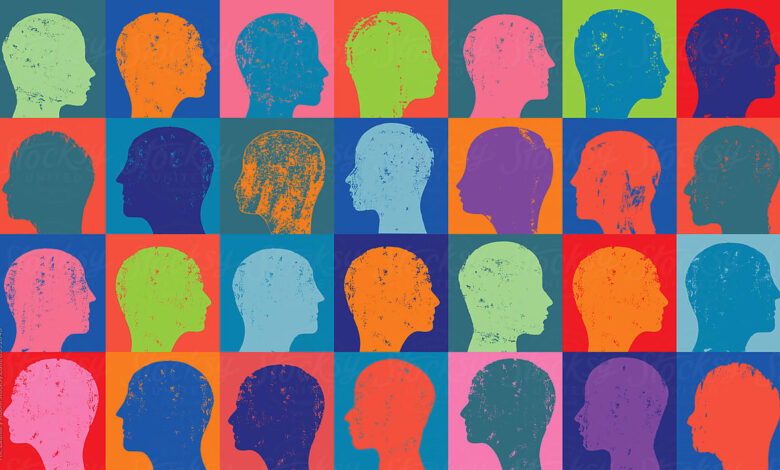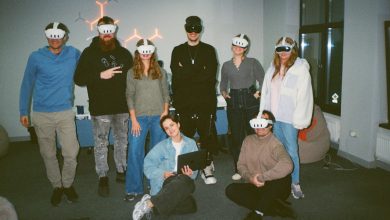
Can traditional brand design be revolutionized through neuroscience? While agencies charge millions to create brand identities, neuroscience-powered GenAI can accomplish this at a fraction of the cost with exponentially greater effectiveness by understanding how brands actually live in consumers’ minds. This has great value for Digital Natives in particular – businesses that are innovating rapidly by being 100% cloud based. Digital Natives are focused on effectiveness, speed, and the DIY (Do it Yourself) approach to everything.
How the Brain Processes Brand Identity
A brand transcends logos and taglines—it’s a complex neural tapestry woven from visual, emotional, and cognitive threads. Neuroscience reveals that brains process brand identity through multiple pathways simultaneously. Visual identity elements—logos, colors, typefaces—activate the fusiform gyrus, the same brain region responsible for facial recognition. This creates instantaneous brand recognition, similar to spotting a familiar friend in a crowd.
The hippocampus, our memory center, plays a pivotal role in encoding emotional brand associations, cementing brands in long-term memory through what researchers call “Brand Memory Structures.” These structures exist in consumers’ nonconscious minds, directly connecting to the neuroscience of branding.
The Ten Neuro-Dimensions Framework
GenAI algorithms extracting brand identity must leverage these neural structures by systematically composing brand identity along ten key dimensions:
-
Form, Symbology, Semiotics
Visual identity leveraging the brain’s preference for familiarity creates immediate recognition and trust. GenAI algorithms must extract visual and semantic symbols from nonconscious consumer data lakes that capture the cultural zeitgeist in specific markets and demographics. -
Function, Indispensability, Features
Not a laundry list of offerings, but the unique stand-out feature making the brand indispensable in consumers’ lives. This singular functional advantage fosters innovation-based trust when consumers feel the brand reliably meets expectations. -
Feelings, Emotions
The single dominant emotion flooding minds at brand mention becomes the brain’s experiential “shorthand.” This emotional mnemonic codes entire experiences—people may forget what you said, but they remember how you made them feel. -
Values and Moral Identity
Relationships are grounded in shared values. Brands clearly communicating moral principles build trust with aligned consumers, creating belonging through shared identity and purpose. Values become integral to claiming brand identity. -
Social Identity
Brand loyalty becomes part of consumers’ social identity. The belonging aspect of desire is leveraged when consumers perceive brands as symbols of community or status within their circles, enhancing loyalty and advocacy. -
Personal Identity
Brands enhancing self-perception and aligning with self-actualization goals provide immense personal value. This addresses Maslow’s highest hierarchy level—self-improvement, purpose, and personal growth—making the brand critical to consumers’ lives. -
Halos and Extensions
Brands can borrow credibility from successful categories, eliciting familiarity, novelty, and simplicity. Extensions must feel natural and enhance the core brand without overwhelming complexity. -
Nonconscious Cultural Archetypes
Brands embodying familiar archetypes—heroes or villains—tap deep-seated narratives consumers identify with. The Hero archetype transforms consumers from ordinary to extraordinary, while the Villain archetype represents overcome insecurities, building confidence through brand association. -
Youthfulness, Tone, Voice
Brand age, tone, and voice should align with desired belonging feelings—whether youthful energy or timeless wisdom—depending on target audience and desired brand image -
Sonic Signature
Auditory logos leveraging familiarity and simplicity create recognition across consumer touchpoints. Sonic branding is a critical, often-ignored brand identity component that reinforces consistency through sound.
The Brand Identity Tracking Revolution
Think of these ten dimensions as a brand’s “facial features.” Just as we track how a person’s face changes over time, brands can monitor how their identity evolves across these dimensions. This enables precise adjustments—determining which features need modification to maintain brand vibrancy and vitality.
Instead of tracking generic brand “popularity” scores, this framework provides actionable intelligence about specific identity components that drive consumer connection.
The GenAI Advantage
GenAI algorithms that delve deep into cultural zeitgeist using nonconscious data lakes will create dynamic, resonant brand identities that are inherently desirable. By systematically composing identity along these scientifically-grounded dimensions, brands can create holistic, compelling identities that resonate with both conscious and nonconscious consumer minds.
This neuroscience-powered approach promises to revolutionize brand strategy, making it more effective, efficient, and emotionally resonant than ever before, and usable by Digital Natives.
__________
About the Author
Dr. A. K. Pradeep is the founder and CEO of Sensor.iAi and is one of the world’s leading experts on applied neuroscience and artificial intelligence. He is a highly successful serial entrepreneur, having founded NeuroFocus (acquired by Nielsen) and BoardVantage (acquired by Nasdaq). Dr. Pradeep has over 90 patents and has written four books: The Buying Brain, Ai for Marketing and Product Innovation, Governance: 6 Easy Pieces, and Neuro AI: How to Win the Minds of Consumers Using Neuroscience-Powered Gen AI.





